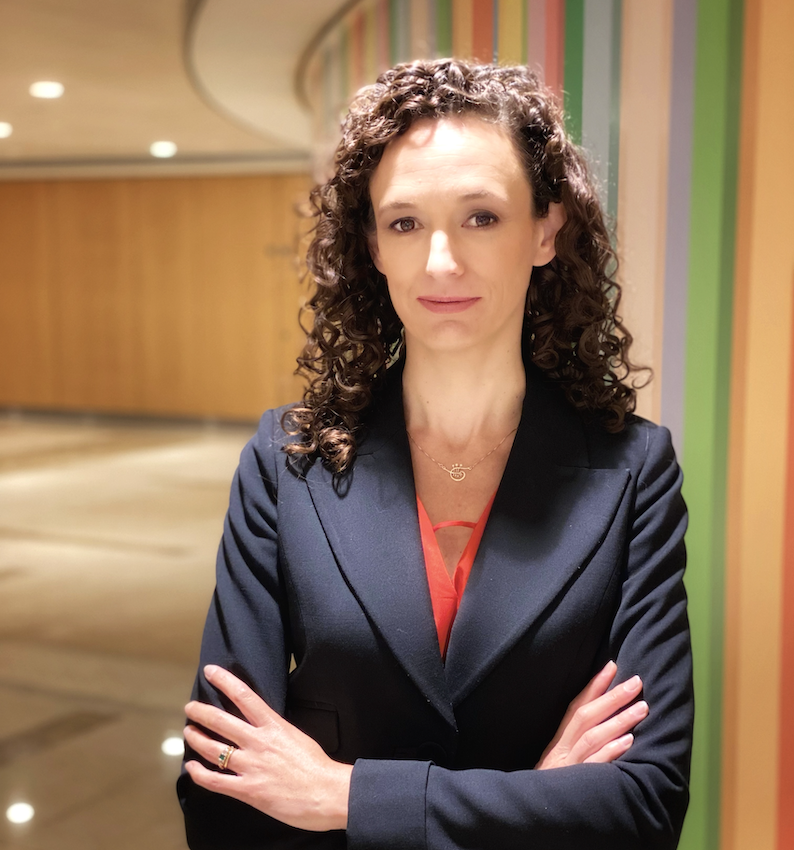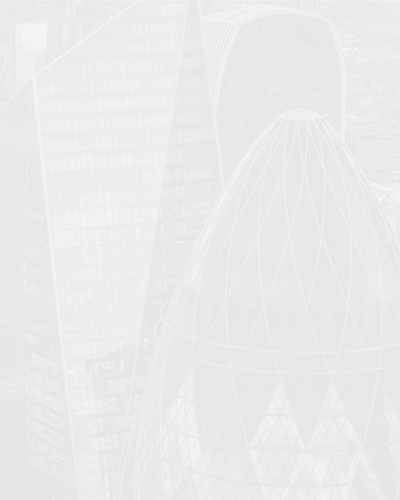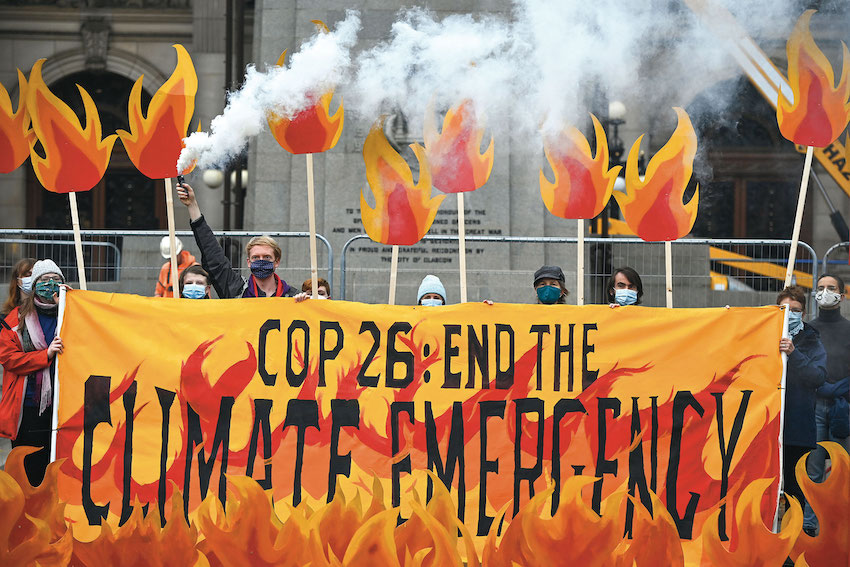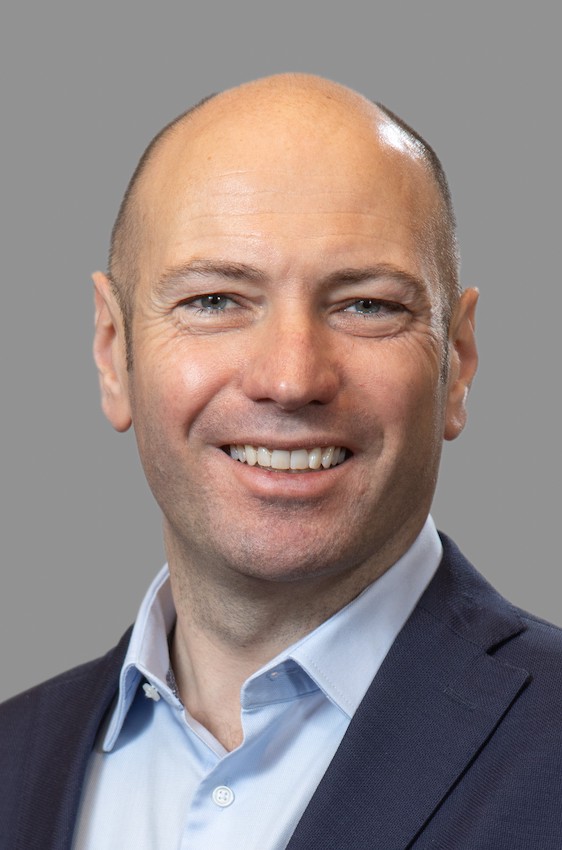The Ellen MacArthur Foundation’s new CEO Jonquil Hackenberg sees huge potential for AI to help businesses and policymakers accelerate the transition to a circular economy. She speaks to Brunswick’s Lucy Parker and Anna Sheehan.
The Ellen MacArthur Foundation has long been recognized as a champion of the circular economy, well known for putting the issue of plastic waste on the map globally. Making the shift from today’s linear economy—where we take, use and throw away materials—to a circular economy, where we aim to reduce waste and keep materials, is a massive systems transformation. Appointed CEO in November 2024, Jonquil Hackenberg is well equipped to lead EMF into the future, with more than two decades of experience spearheading major transformation programs in businesses.
She speaks with Brunswick’s Lucy Parker and Anna Sheehan about how artificial intelligence can accelerate the transition to a circular economy, highlighting some innovative startups helping to make that a reality.
Everybody’s excited about how AI can trigger innovation. What’s the opportunity you see connecting AI to the circular economy?
AI has quite a bad rep right now. It always seems to be portrayed as this evil specter, doesn’t it?
But working towards a circular economy involves systems thinking which is very complex. And AI is really helpful in complex problem solving. It allows us to pull information from different places across a system to draw out new possibilities. It can help us accelerate exploration of alternative materials, for example, or glean insights from across a range of policy areas about the barriers we need to overcome.Progress will not come from treating circularity, or climate, or innovation separately: We need a multidisciplinary approach. So, I think the opportunity that AI offers is huge.
What kinds of materials innovation are you thinking of?
If we look at plastics and packaging—specifically, single-use plastic and how to solve for pollution and waste from sachets—the great challenge is finding the right material which can replace those sachets. And obviously human consumption requires a higher grade than other uses might, so we need more than one solution.
Using the power of AI to understand in-depth information about different material types allows us to pull data from different industries and different material applications to identify whether a particular material would be suitable for human consumption. It accelerates innovation—and cuts years off the process of researching into material development.
Have you any examples of innovative companies using AI for circularity today?
I’ve come across a startup called CleanHub which uses agentic AI and AI data from a range of waste management sources to analyze what types of materials are in the waste. It separates the waste into different categories, which allows the waste collectors to sort it much more efficiently. So, we’re seeing clever innovations like that emerge, which allow humans and technology to play together in very interesting ways.
There’s an interesting AI-powered waste analytics provider called Greyparrot, which basically enables deep understanding of discarded resources and waste, which is then used to improve recycling facilities. Another great one is Winnow, a company using AI tools to help chefs run more profitable and sustainable kitchens by cutting food waste, through reuse rather than throwing it away.
And what about the emergence of circular business models?
It’s beginning. There’s a startup called Rheaply, for example, which has created a platform to facilitate the reuse of building assets at scale. It leverages AI to figure out how assets could be reused and repurposed, then matchmakes between organizations. From my understanding, it’s almost like a dating site for assets—supply and demand get matched up using AI.
And GenAI can open up visions of what circular business models could look like—for example, how could I imagine what circular fashion looks like? The application of AI in that space is generating consumer insights into buying patterns that can influence how you could create circular business models based on reuse.
“Using the power of AI to understand in-depth information about different material types … accelerates innovation—and cuts years off the process of researching into material development.”
It sounds like the greatest amount of activity today is in the management and reduction of waste. What do you see coming through next in this area?
I think that’s right; lots of it is around waste at the moment and the part that is really on the rise is digitalization around blockchain traceability, with digital product passports linked into that traceability of the supply chain. Coupled with Extended Producer Responsibility, this allows materials to be recovered at as high a quality as possible to make the reuse most effective.
What will it take for us to see even further progress?
This almost sounds like a cliché maybe, but it’s about connecting every element of the value chain together. Microsoft, for example, is focusing on its unique ability to measure, predict and optimize complex systems.
So, in terms of the opportunity for circularity, it’s applying that capability to the reuse of materials and then bringing every player in the system around the table to develop new solutions. So rather than treating AI in a separate sphere, it’s harnessing AI to full value chain solutions to help us go faster.
In 2018, EMF produced a report on AI and the circular economy, most of which was imagining into the future. Do you think there has been much progress since then?
It’s all now started to get under way and AI is beginning to solve more complex problems. Earlier this year the Rocky Mountain Institute released a paper about the circularity of an EV battery. It looked at how much of a battery could be reused if the materials were kept in circulation as well as if there were sufficient facilities for reuse of specific components—lithium for example—but also the critical raw materials required. This allows us to start figuring out how to manage the materials that are needed, so that we can go beyond just extracting them and move towards reuse and recycling. The critical materials needed for the future economy will be a major area of focus for us at EMF.
What do you think the connection with policy is? What’s the ask from policymakers?
Recently, we’ve been seeing more and more potential for AI in policy insight. There are now 75 countries that have circular economy road maps. Using GenAI can help us to quickly analyze what policies and actions are already out there that could be applied in another country to tackle common opportunities and problems much faster.
The ask from policymakers is to look at a critical whole system solution. For example, at EMF, what we’re now trying to do is go deep on three specific areas: plastics and packaging, the production and consumption of consumer products, and the use and reuse of raw materials through the lens of material security and the energy transition.
The reason I mention those three areas is because they are multidisciplinary; they cut across different policy experts and different government departments. So our ask is that we have all the different policymakers in a room to think about these issues as a whole system solution, rather than only from one point of view.
If you take the EV car scenario, that was and has been a classic example of still thinking in a very linear fashion rather than a circular fashion, because we haven’t solved for the infrastructure, the use of charging points, or the design for where people actually need to charge, and at what point, as one whole system. It’s all been considered through a very narrow lens. So, the ask for policy makers is to think of the end problem and then put the value chain around it so that the policy is much more holistic.
“Rather than homing in on pure innovation to do something small, we should think about what can be scaled. We need businesses to think more ambitiously.”
Do you think the businesses you work with have begun to find applications for AI in their circularity efforts yet?
Some advanced organizations have-—Microsoft, for example. Unilever, Philips or IKEA are definitely all thinking this way. These are leaders in many different aspects of their industries and they’re thinking about how the system links together in the whole.
Generally—and I’m describing it in broad-brush terms here—we’re at the stage where digital and sustainability were 20 years ago. We used to hear people say, ‘we’ve got to make everything sustainable’ and ‘we’ve got to digitize everything’. But to achieve making ‘everything circular’, we’ve got to get more nuanced on what that really means and how to do it. It is a major transformation.
For businesses that are looking to accelerate their circular AI efforts, how can they get started?
Well, talking to EMF would be a good place to start! Because what we’re trying to do is focus on specific challenges that will then result in time-bound outcomes within the next three to five years.
At EMF we’re looking at real solutions that can be scaled up in the real world, whether that’s waste collection at scale, or the design of materials that are going to replace single-use plastics, or the solutions needed for EV batteries or the wind industry, or looking at consumer insights and new business models for fashion, or food, or even health and beauty.
Come and talk to us, because we can plug in those connections to the use of AI, searching for the right application for circularity, married together with the people and organizations who are trying to accelerate and demonstrate action.
Thinking about the future of AI and circular economy, what would be your call to action for businesses?
I would simply say: “think in systems.”
We need businesses to convene around a single problem—so that we can understand and demonstrate where infrastructure plays, where AI plays, where physical innovation plays, where business models play, where the supply chain plays and where policy plays. We need to have all of those ingredients to effect change.
Rather than homing in on pure innovation to do something small, we should think about what can be scaled. We need businesses to think more ambitiously.
Is there anything else that you want to mention?
It’s encouraging to know that it’s not the responsibility of any one actor to change the whole system alone. In reality, in any system, it takes just 5-10% of truly committed people to create a tipping point that can lead to the bigger change. So, we need that 10% for circularity. And if we apply AI to the systems solutions needed, we can go faster and I’m sure there is a promising road ahead.
Startups For Circularity
CleanHub is on a mission to end plastic pollution and clean our oceans. They’ve collected over 13 million kgs of waste to date and partnered with 400+ brands to help reduce plastic use and collect more than they produce.

Their AI-powered track-and-trace system analyzes waste, predicting its composition, volume and density. Recyclable materials are processed locally, while non-recyclable plastic—80% of ocean pollution—is turned into fuel through a partnership with Geocycle. Every step of the process is tracked via the app, giving brands real-time data to showcase their impact.

Greyparrot uses its AI-powered technology, Greyparrot Analyzer, to analyze waste in sorting facilities. Mounted above conveyor belts, the Analyzer uses cameras to capture images, identifying seven key data points: composition, mass, financial value, food-grade status, function, size, brand, SKU and emissions estimate. It provides a live dashboard with real-time insights, offering 100% visibility into waste composition—what they call “waste intelligence.”

Winnow helps the food service industry cut waste and save money with its AI-powered system, Winnow Vision. Trained to recognize over 1,000 food items, it analyzes discarded food, tracks waste patterns, and provides actionable insights. Winnow’s reporting suite delivers daily and weekly summaries to highlight costly waste and offer solutions. The platform has saved $85 million, prevented 60 million meals from being wasted, and reduced 106,000 tonnes of CO2 across 3,000 kitchens in 90+ countries.

Rheaply offers an AI-powered inventory management system and digital marketplace that helps companies reduce waste, save money and meet sustainability goals. It tracks assets to optimize reuse and prevent over-purchasing. Through its Circular Cities initiative, Rheaply connects businesses to local reuse communities, reducing waste and carbon emissions by facilitating material exchange, selling excess resources and supporting donations.
More from this issue

AI Impact
Most read from this issue
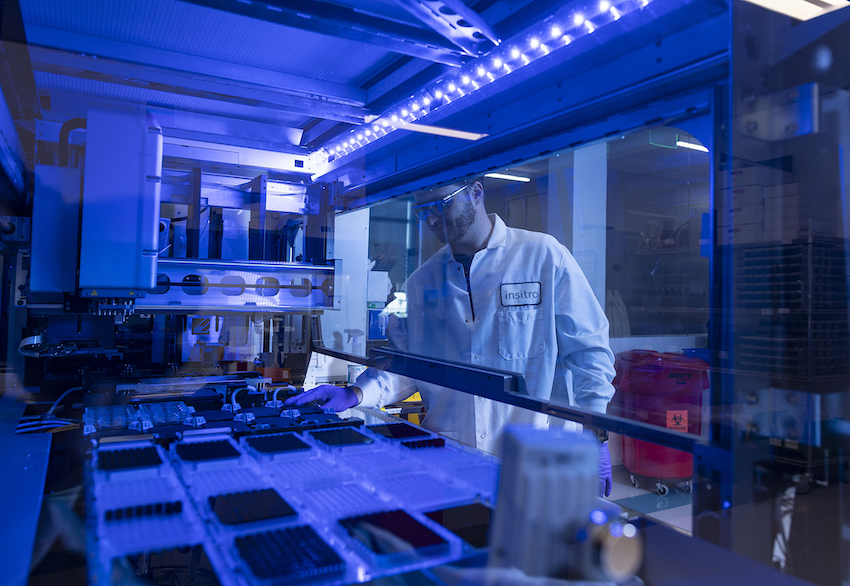
Unlocking the AI Medicine Chest
